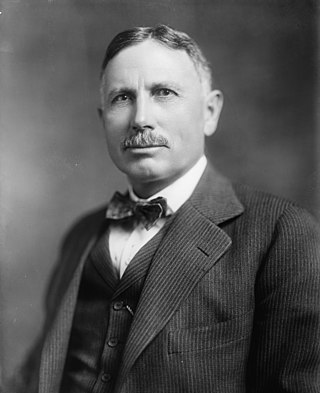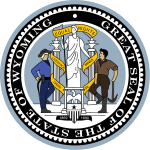
The 1986 United States Senate elections were elections for the United States Senate. Held on November 4, in the middle of Ronald Reagan's second presidential term, the 34 seats of Class 3 were contested in regular elections. The Republicans had to defend an unusually large number of freshman Senate incumbents who had been elected on President Ronald Reagan's coattails in 1980. Democrats won a net of eight seats, defeating seven freshman incumbents, picking up two Republican-held open seats, and regaining control of the Senate for the first time since January 1981. This remains the most recent midterm election cycle in which the sitting president's party suffered net losses while still flipping a Senate seat.

The 1972 United States Senate elections were held on November 7, with the 33 seats of Class 2 contested in regular elections. They coincided with the landslide re-election of Republican President Richard Nixon. Despite Nixon's landslide victory, Democrats increased their majority by two seats. The Democrats picked up open seats in Kentucky and South Dakota, and defeated four incumbent senators: Gordon Allott of Colorado, J. Caleb Boggs of Delaware, Jack Miller of Iowa, and Margaret Chase Smith of Maine. The Republicans picked up open seats in New Mexico, North Carolina, and Oklahoma, and defeated one incumbent, William B. Spong Jr. of Virginia.

The 1966 United States Senate elections were elections on November 8, 1966, for the United States Senate which occurred midway through the second term of President Lyndon B. Johnson. The 33 seats of Class 2 were contested in regular elections. Special elections were also held to fill vacancies. With divisions in the Democratic base over the Vietnam War, and with the traditional mid-term advantage of the party not holding the presidency, the Republicans took three Democratic seats, thereby breaking Democrats' 2/3rds supermajority. Despite Republican gains, the balance remained overwhelmingly in favor of the Democrats, who retained a 64–36 majority. Democrats were further reduced to 63–37, following the death of Robert F. Kennedy in June 1968.

The 1964 United States Senate elections were held on November 3. The 33 seats of Class 1 were contested in regular elections. Special elections were also held to fill vacancies. They coincided with the election of President Lyndon B. Johnson by an overwhelming majority, to a full term. His Democratic Party picked up a net two seats from the Republicans. As of 2023, this was the last time either party has had a two-thirds majority in the Senate, which allowed the Senate Democrats to override a veto, propose constitutional amendments, or convict and expel certain officials without any votes from Senate Republicans. However, internal divisions would have prevented the Democrats from having done so. The Senate election cycle coincided with Democratic gains in the House in the same year.

The 1960 United States Senate elections coincided with the election of John F. Kennedy as president on November 8, 1960. The 33 seats of Class 2 were contested in regular elections. A special election was also held on June 28, 1960, for a mid-term vacancy in North Dakota where Democrats flipped a seat to expand their majority to 66–34. As Majority Leader Lyndon Johnson was elected Vice President, Mike Mansfield became the new majority leader.

The 1948 United States Senate elections were held concurrently with the election of Democratic President Harry S. Truman for a full term. The 32 seats of Class 2 were contested in regular elections, and one special election was held to fill a vacancy. Truman campaigned against an "obstructionist" Congress that had blocked many of his initiatives, and additionally, the U.S. economy recovered from the postwar recession of 1946–1947 by election day. Thus, Truman was rewarded with a Democratic gain of nine seats in the Senate, enough to give them control of the chamber. This was the last time until 2020 that Democrats flipped a chamber of Congress in a presidential election cycle.

Joseph Christopher O'Mahoney was an American journalist, lawyer, and politician. A Democrat, he served four complete terms as a U.S. senator from Wyoming on two occasions, first from 1934 to 1953 and then again from 1954 to 1961.

John Benjamin Kendrick was an American politician and cattleman who served as a United States senator from Wyoming and as the ninth Governor of Wyoming as a member of the Democratic Party.

The 1912–13 United States Senate elections were held on various dates in various states. They were the last U.S. Senate elections before the ratification of the Seventeenth Amendment in 1913, establishing direct elections for all Senate seats. Senators had been primarily chosen by state legislatures. Senators were elected over a wide range of time throughout 1912 and 1913, and a seat may have been filled months late or remained vacant due to legislative deadlock. Some states elected their senators directly even before passage of Seventeenth Amendment. Oregon pioneered direct election and experimented with different measures over several years until it succeeded in 1907. Soon after, Nebraska followed suit and laid the foundation for other states to adopt measures reflecting the people's will. By 1912, as many as 29 states elected senators either as nominees of their party's primary or in conjunction with a general election.

The 1852–53 United States Senate elections were held on various dates in various states, coinciding with the 1852 presidential election. As these U.S. Senate elections were prior to the ratification of the Seventeenth Amendment in 1913, senators were chosen by state legislatures. Senators were elected over a wide range of time throughout 1852 and 1853, and a seat may have been filled months late or remained vacant due to legislative deadlock. In these elections, terms were up for the senators in Class 2.

The 1960 United States Senate election in Wyoming was held on November 8, 1960. Incumbent Democratic Senator Joseph C. O'Mahoney was first appointed to the U.S. Senate from Wyoming's Class 1 Senate seat in 1934, and was re-elected in 1934, 1940, and 1946 before losing re-election in 1952. He was then elected to the Class 2 Senate seat in 1954. O'Mahoney, in failing health and increasingly limited in his mobility, declined to run for a fifth non-consecutive term in the Senate. The winner of this election, Keith Thomson, died before assuming his elected office.

The 1956 United States Senate special election in Colorado took place on November 6, 1956. Incumbent Republican Senator Eugene Millikin declined to seek re-election to a third term and a competitive election ensued. Former Congressman John A. Carroll, in his third consecutive bid for the Senate, narrowly defeated former U.S. Secretary of Agriculture Charles F. Brannan in the Democratic primary and advanced to the general election, where he faced Governor Dan Thornton, the Republican nominee. Despite Democratic presidential nominee Adlai Stevenson's poor performance in Colorado, state-level Democrats fared much better. Carroll ended up narrowly defeating Thornton, winning his only term in the U.S. Senate.

The 1916 United States Senate election in Wyoming took place on November 7, 1916. Incumbent senator Clarence D. Clark, a Republican, sought re-election in his first popular election. He was opposed by John B. Kendrick, the incumbent governor of Wyoming and the Democratic nominee. Owing in part to President Woodrow Wilson's strong performance in the presidential election that year, Kendrick won a narrow but decisive victory over Clark, winning the first of three terms in the U.S. Senate.

The 1922 United States Senate election in Wyoming took place on November 7, 1922. First-term Democratic Senator John B. Kendrick ran for re-election to a second term. He was opposed by Republican Congressman Frank W. Mondell, the Majority Leader of the U.S. House of Representatives. Kendrick won re-election by a wide margin, defeating Mondell, despite his long record of representing the state in Congress, with 57% of the vote to Mondell's 43%. Kendrick was also able to increase his margin of victory from 1916, despite Republicans generally doing well in Wyoming in 1922.

The 1940 United States Senate election in Wyoming took place on November 5, 1940. Democratic Senator Joseph C. O'Mahoney ran for re-election to a second full term. He faced Republican Milward Simpson, a member of the University of Wyoming Board of Trustees and a former State Representative, in the general election. Though the presidential election in Wyoming was relatively close, O'Mahoney outperformed President Franklin D. Roosevelt's narrow win, and defeated Simpson in a landslide to win his second term.

The 1934 United States Senate elections in Wyoming took place on November 6, 1934. Incumbent Democratic Senator John B. Kendrick died on November 3, 1933, and Joseph C. O'Mahoney was appointed by Governor Leslie A. Miller as Kendrick's replacement. Two elections for the same Senate seat were held on the same day; one as a special election to fill the remainder of Kendrick's original six-year term, and another to select a Senator to serve the next six-year term. O'Mahoney ran for re-election in both elections. He was opposed by Republican Congressman Vincent Carter. Aided by the strong performance by the Democratic Party throughout the country in 1934, and by Governor Miller's landslide re-election, O'Mahoney handily defeated Carter to win re-election.

A general election was held in the U.S. state of Wyoming on Tuesday, November 7, 1950. All of the state's executive officers—the governor, secretary of state, auditor, treasurer, and superintendent of public instruction—were up for election. The Republican Party swept all of the offices. Following Democratic governor Lester C. Hunt's election to the U.S. Senate in 1948, Republican secretary of state Arthur G. Crane had been acting as governor. Republican Congressman Frank A. Barrett was elected governor, and Republican candidates won the other statewide races.

A general election was held in the U.S. state of Wyoming on Tuesday, November 7, 1922. All of the state's executive officers—the Governor, Secretary of State, Auditor, Treasurer, and Superintendent of Public Instruction—were up for election. Democrats improved considerably from their performances in 1918, with William B. Ross winning the gubernatorial election and almost all of their statewide candidates outpacing their 1918 nominees. However, Republicans held all of the other statewide offices.

A general election was held in the U.S. state of Wyoming on Tuesday, November 3, 1914. All of the state's executive officers—the Governor, Secretary of State, Auditor, Treasurer, and Superintendent of Public Instruction—were up for election. Governor Joseph M. Carey declined to seek re-election to a second term, and Democratic State Senator John B. Kendrick was elected as his successor. Republicans, however, won all of the other statewide executive offices, including picking up the Superintendent's office.

A general election was held in the U.S. state of Wyoming on Tuesday, November 5, 1918. All of the state's executive officers—the Governor, Secretary of State, Auditor, Treasurer, and Superintendent of Public Instruction—were up for election. Republicans won all statewide offices by wide margins, and with Robert D. Carey's defeat of Frank L. Houx, picked up the governorship following two consecutive losses to Democrats.




















